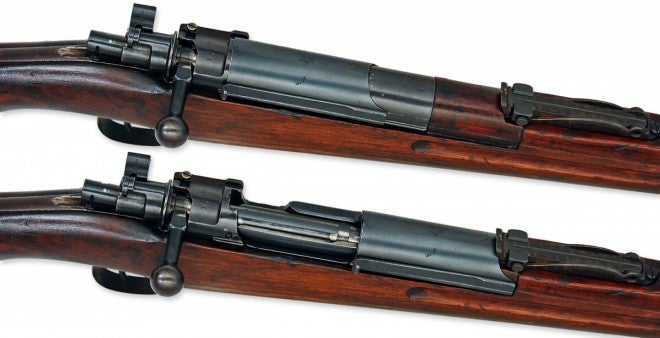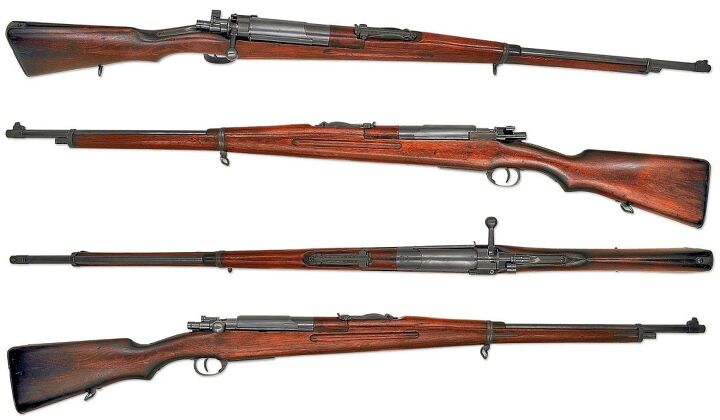Siam was unique in South East Asia for its avoidance of Western colonization. Its sovereignty was guaranteed by politically deft royals and a Japanese-modeled system of aggressive modernization. At the turn of the century, Siam sought to rearm its soldiers with a rifle of unique design.
What we often refer to as the Thai or Siamese Mauser is actually a design licensed from Germany, modified and manufactured in Japan, and adopted in 1903. This was AFTER the adoption of the 8x50mm rimmed Thai cartridge in 1902. Originally the rifle was designated with the “Rattanak 121” due to 1903 being the 121st year of the Rattanakosin Kingdom. Later, during a period of modernization, Thailland would switch to the Buddhist calendar and so 1903 became 2446 and the rifle was retroactively referred to as the Type 46. The ammo, from 1902, became 2445 in the Buddhist calendar and has led to years of confusion in which the rifle is often called the “Type 45.”
The R.S. 121 (Type 46) Mauser was essentially a Model 1898 stocked somewhat like the earlier 1896. In Japan it was fitted with an Arisaka Type 35 styled dust cover and deep tangs, also some examples have Arisaka-like two piece stocks. In 1923 the 8x50mmR cartridge was upgraded to 8x52mmR (Type 66), a spitzer bullet with improved power. Existing Type 45 rifles were more than strong enough and so many were rechambered. Because the updated ammo was flatter shooting, the rear sights were ground down to match the new trajectory. These converted rifles are commonly referred to as “Type 46/66.”
For collectors, Thai Mausers can be found in a variety of conditions. Many were imported cheaply and subsequently show signs of abuse such as rust, missing or chopped pieces, rechamberings (usually to .45-70), and other neglect. However, some can be found in pristine shape as well and exhibit beautiful markings, right down to the interesting serials. Ammunition is extinct and requires a fair knowledge of handloading and cartridge conversion to produce, but if loaded these are strong, safe, and accurate rifles. They have a fantastic long and narrow contour with good balance. If you have the occasion please do handle one for yourself as they are truly unique Mausers. We have a little more information on these rifles over at C&Rsenal.
 Your Privacy Choices
Your Privacy Choices


